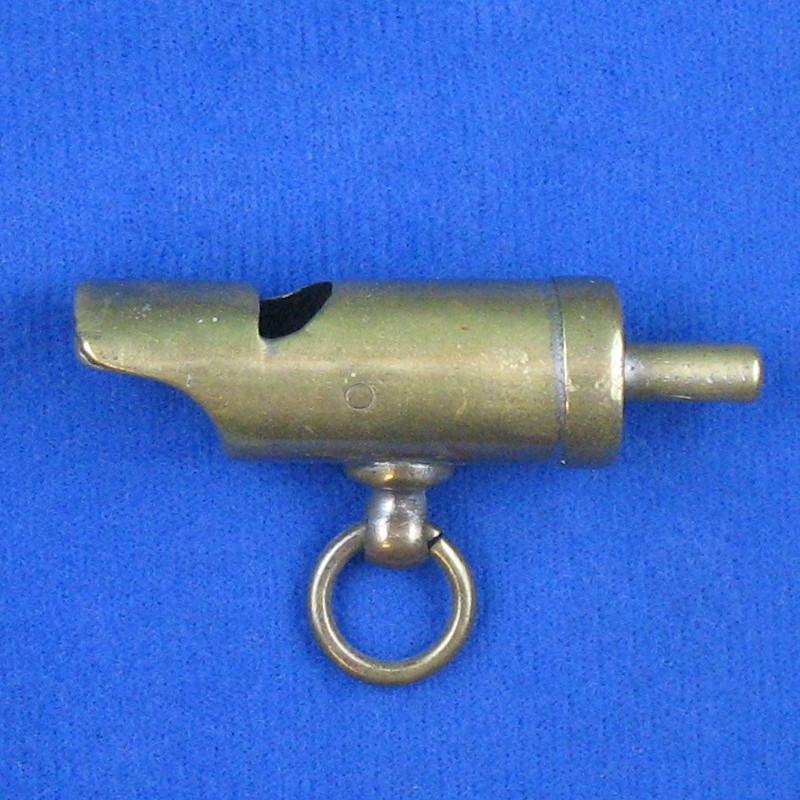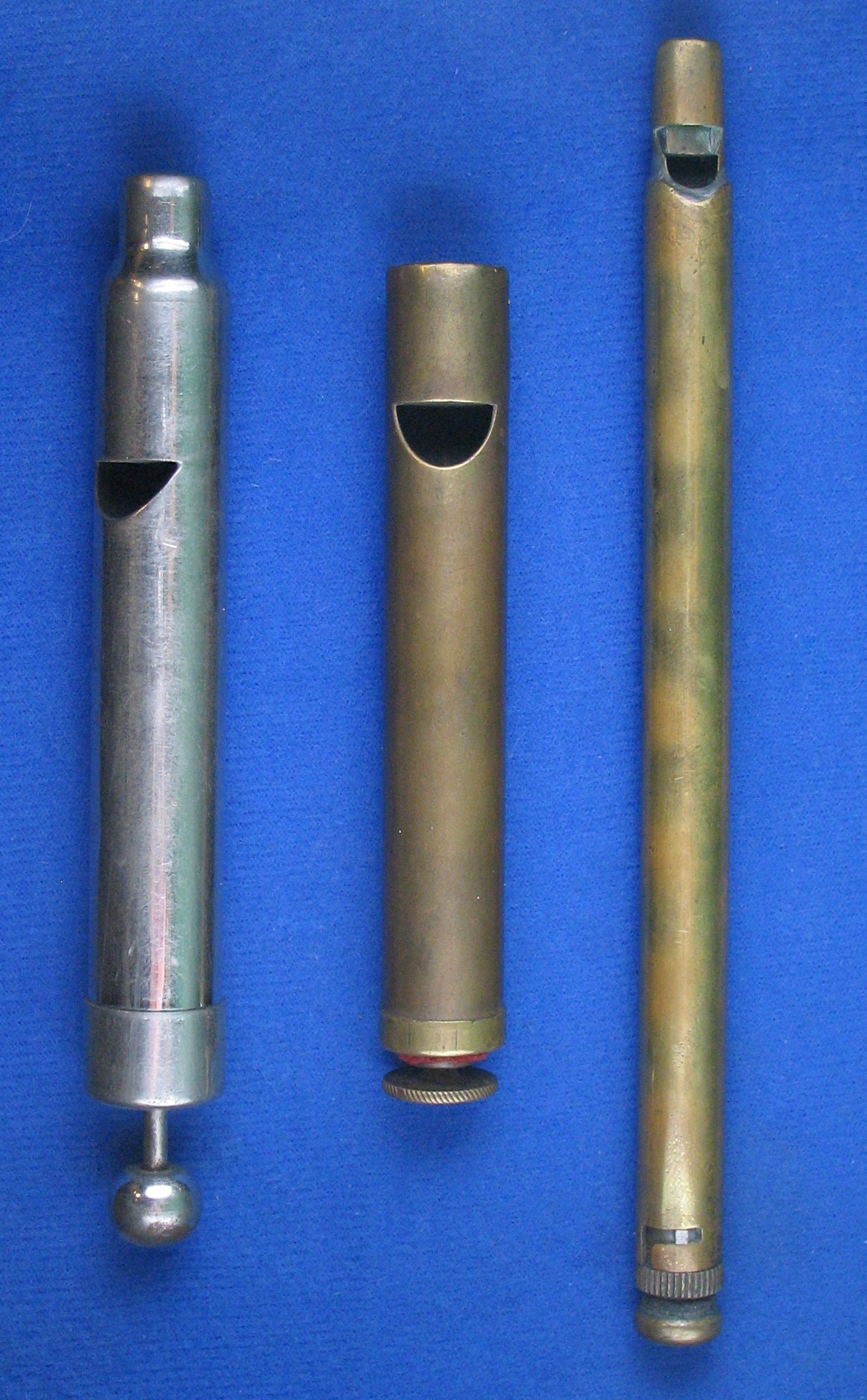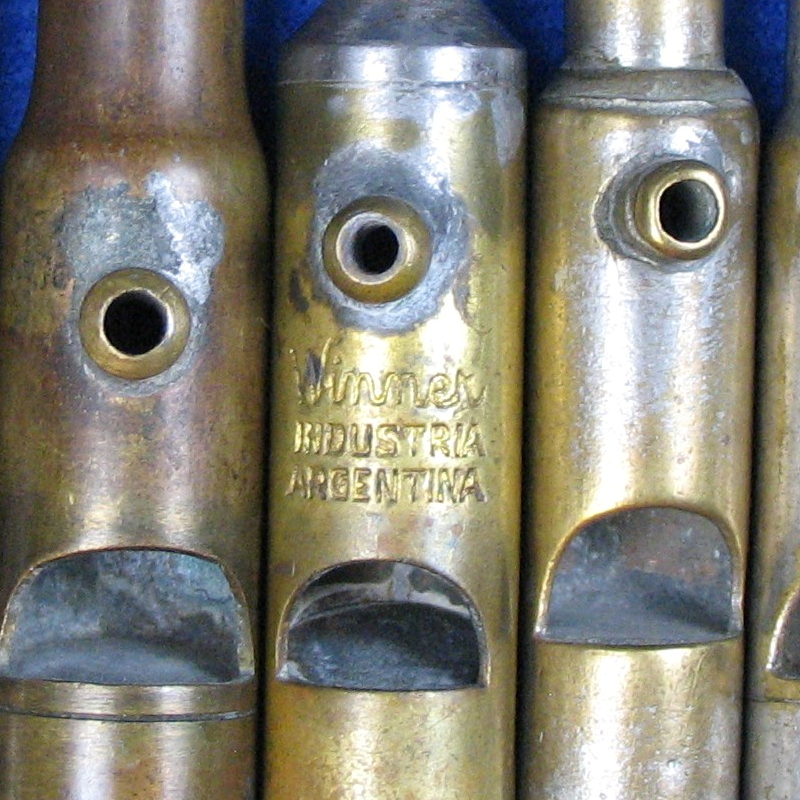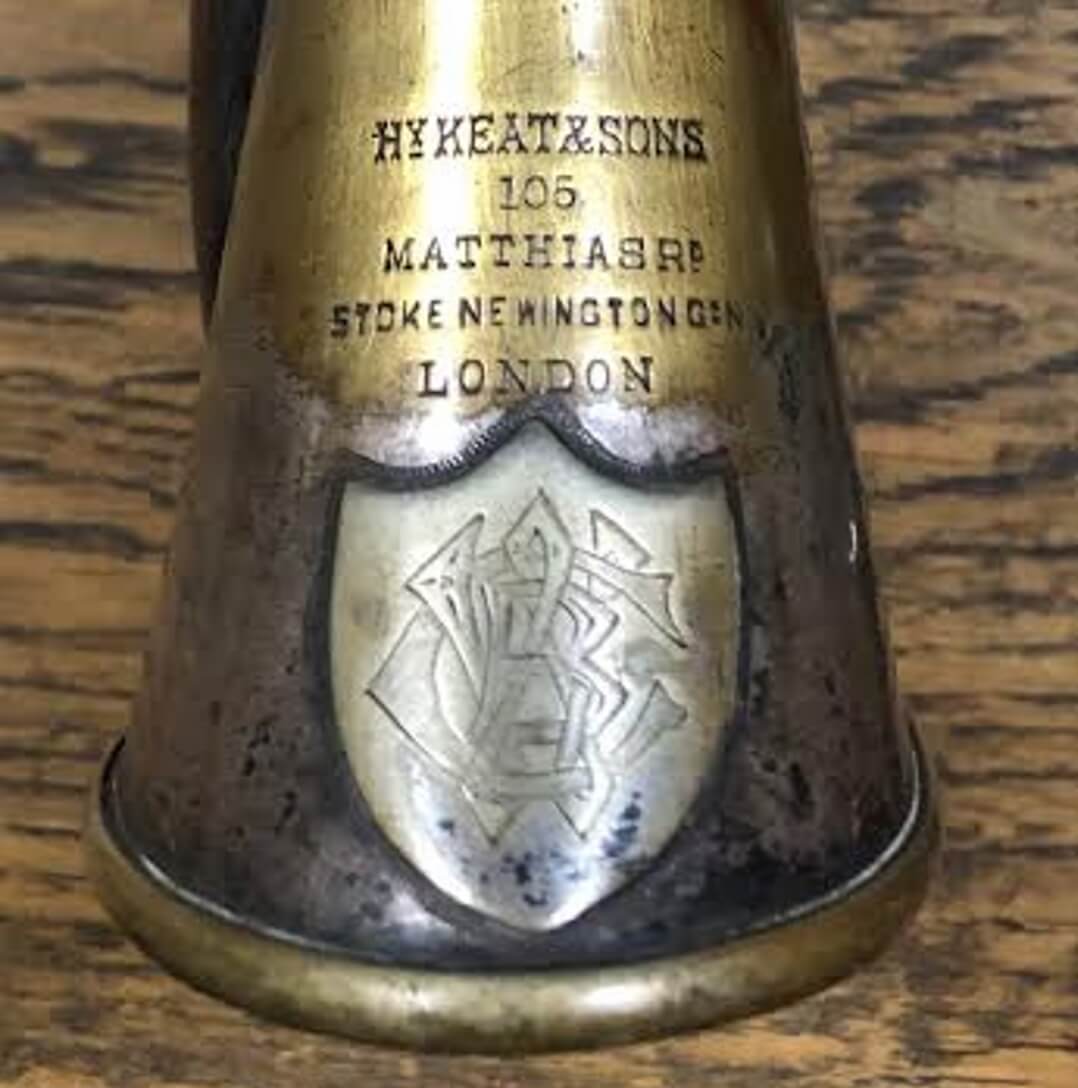Whistle Categories > Slider Whistles

Where did slider whistles originate?
The sliding whistles earliest appearances appears to have to do with drummer’s traps or sound effects devices for stage, vaudeville, silent movies and eventually radio especially in the United States.
Eventually these were used for radio stations, but the real heyday of sliders was for sound effects. Later they would proliferate as children’s toys, manufactured in China and Japan.
Although made later in other countries sales seem to be for the USA. Other countries merely making them for export.
How are slider whistles identified?
All sliding whistles are long tubes for the sliding device.All have a shaft and rod inserted.The sliding whistle has a rod inserted into a long housing that with the handler, moves back and forth enabling the holder to blow into the mouthpiece altering the sound pitch. This can be organized into notes and tunes even played.
Further identification of the maker is found on the stamps of the body or catalogs of the day with drawings that might match the top cap ( many times removable for cleaning ), the body length and the mouthpiece design.
Why were they made?
Sliding whistles were specifically targeted ate the use of drummer’s traps who made sounds for silent performances on stages during the time period from the civil war to the end of silent movies just prior to 1930.
This left a lot of room for innovation. Some were deep and hollow, some were musical instruments, others were used as bird calls.
Since there was so much room for the holder, a wide variety of innovative sounds could be produced for the stage.
In time this would become obsolete when sound was accomplished at the movies just prior to 1930. This would lead to the slider market bending towards the toy industry.

© – All photos with blue background property of The Whistle Gallery reference collection. Please contact The Whistle Gallery for permission of use of any website content. Use of photos without authorization is prohibited.








